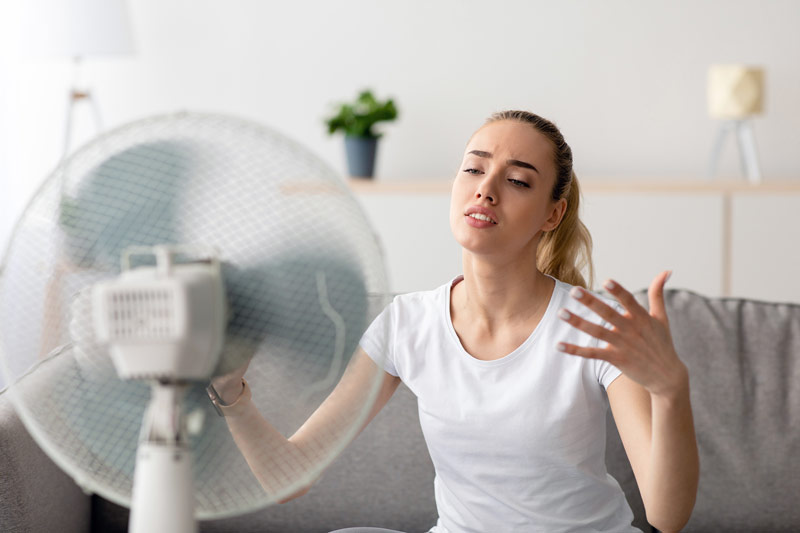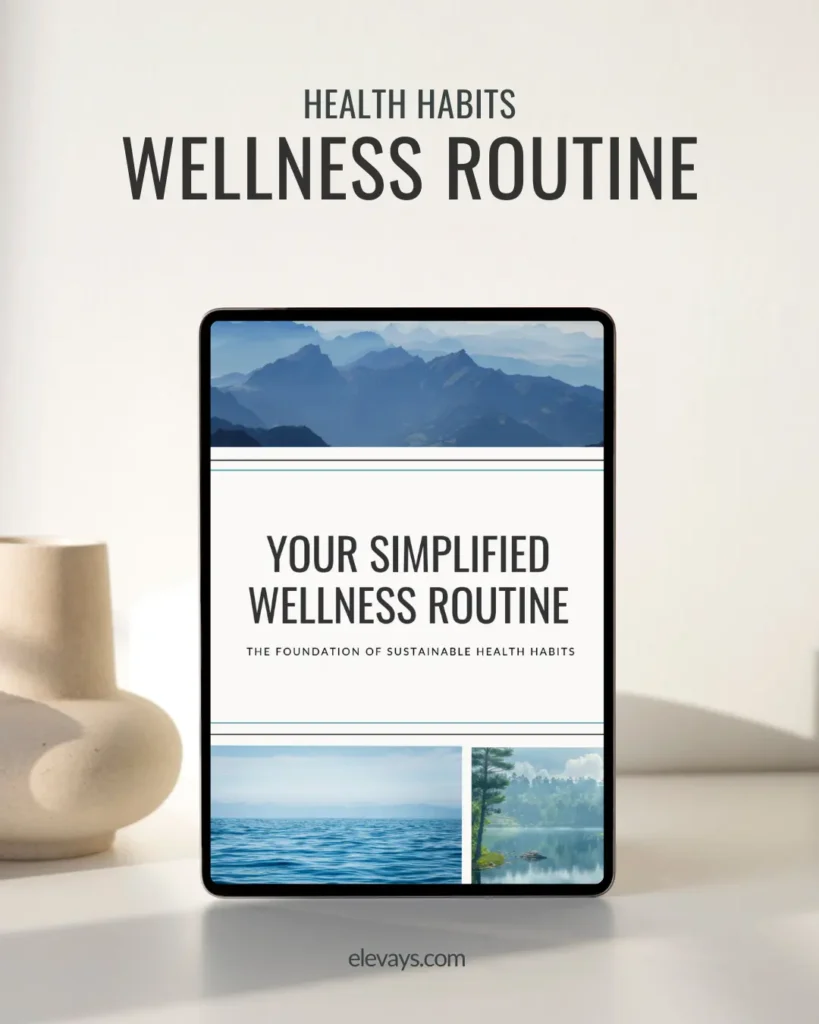Estrogen, one of our most important groups of hormones, seems to have her hand in everything—from mood and libido to PMS and energy levels. If estrogen is not properly balanced in our bodies, we’re going to have some issues! In this article, we’re specifically diving into the symptoms of low estrogen and how to support healthier levels.
What is Estrogen?
Estrogen is the hormone primarily responsible for regulating sexual and reproductive health. There are three primary types of estrogen:
- Estrone: mainly produced pre-menopause in the ovaries but can also be made in the adrenal glands and adipose tissues.
- Estradiol: the most abundant form of estrogen we produce during our reproductive years. Responsible for breast development and essential for healthy bone growth, heart health, brain function, and reproductive tissue. Premenopausal women produce estradiol in the ovaries, but it is also manufactured by the adrenals and the placenta during pregnancy.
- Estriol: plays a big role during pregnancy, produced in the placenta
Estrogen is the Queen Bee of hormones. Not only does she shape our monthly hormonal cycle, but she also plays a vital role in a lot of physiological and mental factors, including:
TRUTH BOMB:
You’re
Already killing it!
If You Were More Consistent With Your Wellness Routine, You’d Be Unstoppable.
- Controls cholesterol levels
- Stimulates cell growth
- Helps make melatonin, our sleep hormone
- Regulates the stress response
- Maintains skin and hair health
- Helps produce neurotransmitters like our happy chemical, serotonin
- Control inflammation
- Maintains healthy blood sugar levels
- Controls inflammation
- Prepares uterus for pregnancy
- Essential for healthy bone development
- Supports healthy cognition and memory
Estrogen Imbalance
Here’s the thing, it’s normal for hormone levels, especially estrogen levels, to fluctuate throughout our menstrual cycle on a day-to-day basis. Our hormone levels are also different pre-puberty, during puberty, and after puberty—even in our 30’s and our 40’s.
It makes much more sense to say that our hormones aren’t in optimal ranges for the stage of our life that we are in. So when we dive into low estrogen, it’s important to realize that this means chronic low estrogen.
Low Estrogen Levels and Symptoms
What Can Cause Low Estrogen?
Many factors can play into low estrogen levels. You’ll find that most things that cause low estrogen are also the effects of low estrogen. For example, adrenal fatigue and ovarian cysts. Other things that can cause low estrogen include chronic kidney disease, eating disorders, Turner Syndrome, age, and menopause.
Symptoms of Low Estrogen Levels
Here are the most common low estrogen level symptoms:
1 – Breast Tenderness
If your breasts get tender before your cycle starts, that’s because of low estrogen! Estrogen is supposed to drop right before your period. But if you are suffering from extreme, debilitating breast tenderness or chronic tenderness, then that is a low estrogen symptom you should ask your doctor about. We will also be diving into natural ways to support healthy estrogen levels in a bit, so keep reading.
2 – Hot Flashes
Estrogen impacts the hypothalamus, which regulates body temperature. Low estrogen often results in night sweats and hot flashes, which are common symptoms of perimenopause and menopause.
3 – Amenorrhea or frequently missed periods
An irregular cycle is a tell-tale sign of low estrogen. This is common during perimenopause, but if you are under the age of 40-42, you need to work on regulating estrogen levels to support a regular cycle.
4 – Sleep Issues/Insomnia
As we’ve learned, estrogen is linked to serotonin, which helps to make melatonin. Melatonin is our sleep hormone that lets our brain know it’s time for bed. If you have been doing everything you can to support healthy melatonin production to no avail, you could have low estrogen. In this case, it’s important to increase healthy estrogenic foods when possible.
5 – Mental Health Issues/Mood Problems
Estrogen triggers serotonin production, our happy hormone responsible for keeping us in a good mood. When estrogen is low, so is serotonin. Isn’t it common for you to be crankier and less easy-breezy right before your period? That’s because estrogen is low! If estrogen is chronically low, you could be suffering from mood issues. Some studies show just how essential estrogen is for mental health.
6 – Headaches and Migraines
Headaches and migraines can sometimes be a result of low estrogen levels. Thanks to estrogens’ ability to impact the brain chemicals responsible for pain, when we’re low, we can suffer more. We recommend never scheduling a dentist or wax right before or during your period.
How to Support Healthy Estrogen Levels
Hormone replacement therapy is one of the first things women who have low estrogen levels look into. Hormone therapy is often used for perimenopausal or menopausal women. But we don’t recommend it, and neither does the FDA (over a long period of time). According to the FDA, hormone replacement therapy products are approved for therapies for relief from moderate to severe symptoms of vaginal dryness and hot flashes—but only the lowest dose for the shortest duration of time to achieve goals.
If you are younger, many conventional doctors will put you on birth control to raise estrogen levels. This is a huge no-no! Taking any hormonal birth control will skew your hormones. There are other ways to raise and support healthy estrogen production. Let’s dive in.
Consume Estrogen Rich Foods
Now, there are a lot of foods on the market that are overflowing with estrogen-mimicking chemicals that create major disruption and sometimes estrogen dominance in the body.
To raise estrogen levels naturally, consume foods like cashews, flaxseed (fresh!), cruciferous vegetables, chickpeas, berries, garlic, dried fruit, sesame seeds, and edamame.
Regulate Your Nervous System
Chronic stress and adrenal fatigue can cause levels of estrogen to drop. Remember, the hormones cortisol and estrogen are intricately linked. It’s important to manage stress and calm your nervous system.
You can do this by coming up with a sustainable stress-management plan. This can look like taking a daily walk outside (no exceptions), meditating, taking a bath with essential oils, journaling, dancing, or doing yoga.
Supplement with these Vitamins and Minerals
B vitamins play a critical role in manufacturing estrogen in the body. Low levels of B vitamins can lead to low levels of estrogen. One study showed that women with higher levels of vitamins B2 and B had a lower risk of breast cancer due to these vitamins’ impact on estrogen metabolism.
Vitamin D, which functions as a hormone, works together with estrogen to reduce the risk of heart disease. Vitamin D also plays a part in estrogen synthesis.
Lastly, DHEA is a naturally occurring hormone that can be converted into estrogen. Your body will first convert DHEA into androgens like testosterone and then into estrogen. A study even found that DHEA could provide similar benefits to estrogen to the body.
I hope this article has helped you. Comment below and let me know 2 tangible takeaways that you will implement in your life to support healthier estrogen levels.





READ the Latest
Longevity
Health Habits
Health Habits
Longevity
2 Comments